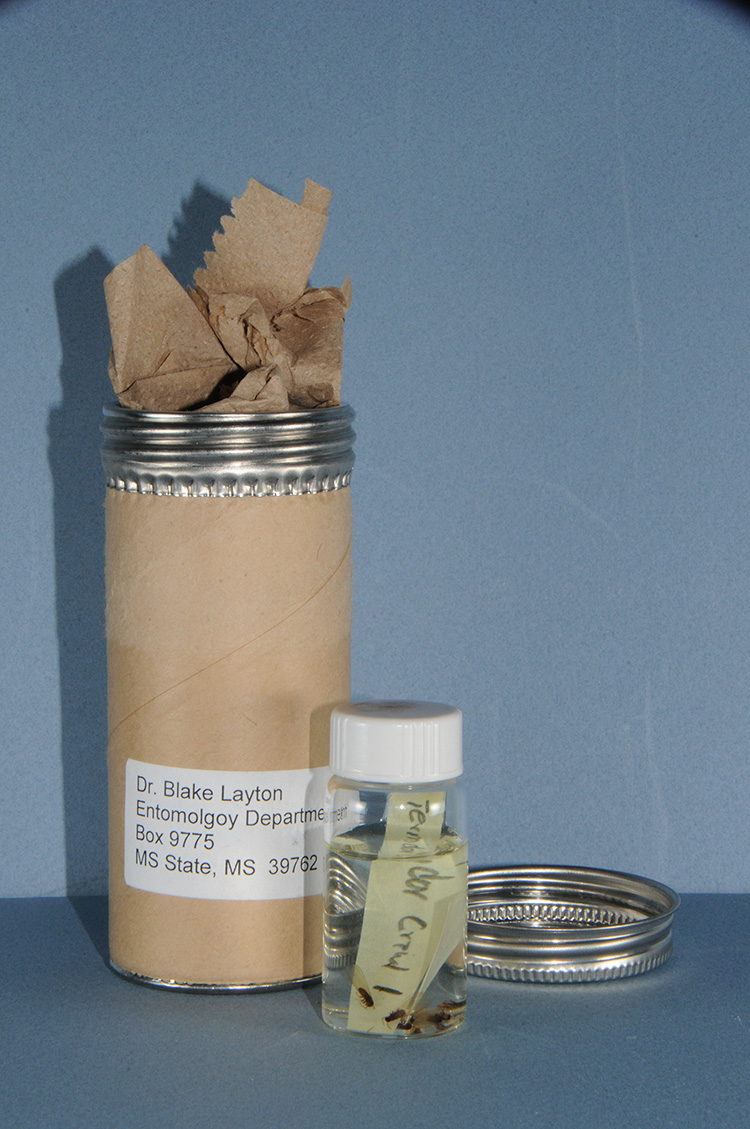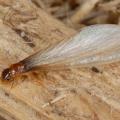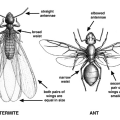Insect Identification Service
If you want to know whether those are termite swarmers or ants you just found in the house, or want to know what species of termite you have, you can send your sample to the MSU Extension Insect Identification Lab. Just place several of the insects in a small leak-proof bottle of ethyl alcohol and package for mailing. Be sure to include your contact information and information about the sample.

Wrap samples in paper towels or other absorbent padding and place in a crush-proof container for mailing.
Mail to:
Extension Insect ID Lab
Box 9775
Mississippi State, MS 39762-9775
The Extension Insect ID Lab also provides identification and control recommendations for other types of insect pests.
There is no charge for insect identifications.
Find more information about insect identification on the MSU Extension Insect Identification section.
Note: We cannot identify termite workers to species by physical examination. If you want to know what species of termite you have, do not send samples that contain only workers. Be sure to collect some soldiers and/or swarmers. Soldiers or swarmers that are preserved in good condition can readily be identified to species. See the section on termite biology to learn how to distinguish workers, soldiers, and swarmers. Be sure to preserve samples in alcohol. Ethyl alcohol is best, but isopropyl alcohol will also work.
Dr. Blake Layton, Extension Entomology Specialist
Department of Entomology, Mississippi State University
Phone: 662-325-2960
Email: blake.layton@msstate.edu
Publications
News
Invasive Formosan subterranean termites were first found in the state 40 years ago, and soon, these dangerous pests will swarm and threaten unprotected structures in about one-third of Mississippi’s counties.
Santos Portugal, Mississippi State University Extension Service urban entomologist, said Formosan termites typically swarm in the millions from early May to early June. They have the ability to infest and significantly damage structures much more quickly than native subterranean termites.
House and building owners must be on high alert each spring as structures face dangerous attacks by swarms of both native and introduced termite species.
Native, subterranean termite species have started swarming in late February in South Mississippi to early March in more northern areas. The non-native, invasive and very damaging Formosan subterranean termite begins swarming in some parts of Mississippi in May.
The word “termite” strikes fear in the hearts of homeowners because this insect is the most economically damaging pest in Mississippi, is very common and requires constant vigilance. Blake Layton, entomologist with the Mississippi State University Extension Service, said the cost of termites is so large that it is hard to pin down.
Success Stories
A dream of the Mississippi Pest Control Association and the Mississippi State University Extension Service is coming true after more than 20 years, thanks to a generous donation by one of Mississippi’s oldest pest-control companies.







